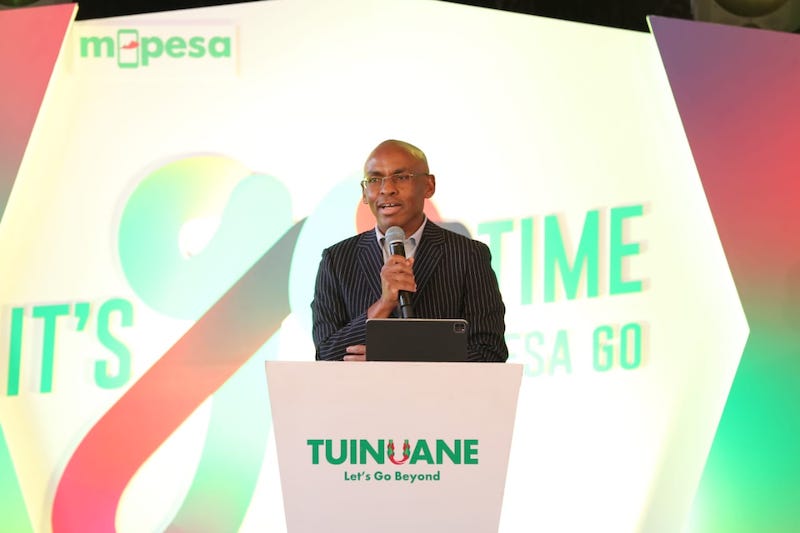
Making its boldest move with M-Pesa 2.0 upgrade, Safaricom, however, is investing over $309 million annually to transform the mobile money platform into a resilient, cloud-native ecosystem. While the company calls the strategy one for future-proofing, it also indicates a high-stakes reaction to ever-increasing pressure from competitors like Airtel Money.
Why the M-Pesa 2.0 Upgrade Matters
M-Pesa 2.0 isn’t just fine-tuning the mechanisms, it’s seeking to build an invisible and frictionless layer of infrastructure. Safaricom CEO Peter Ndegwa describes the upgrade as an investment in capacity, functionality, stability, and resilience. The aim? No downtime at all for the customer, with 50% availability and always-on, ultra-secure performance.
Under Pressure: Infrastructure, Reliability & Trust
M-Pesa stands ingrained into Kenya’s financial fabric, with more than 34 million customers and 30 billion transactions processed in 2024 alone. With this kind of ubiquity, it also bears accompanying loads of expectations. Today, a one-hour outage would not mean some slight glitch; it would mean disruption at the national level. The upgrade to M-Pesa 2.0 would thus ensure that some risks are curtailed and restore trust to its reliability.
Airtel Money’s Steady Rise in 2025
At the same time, Airtel Money continues to gain ground. It marked 8.9% market share in Q1 2025, higher than 7.6% recorded during the previous quarter-yet another quarter in its fifth consecutive quarter of growth. Airtel is now attracting the value-conscious user base and digital-savvy SMEs through its low fees, superb UI/UX, instant cross-border transfers, and P2P free payments within the network.
The Airtel Money Upgrade: A Lesson in Customer-Centered Strategy
There is a valuable lesson to be learned from the recent Airtel Money upgrade in the handling of service issues, so it is always important to put customer satisfaction first. Going through a phase of temporary downtime, Airtel refunded 100% of the transaction fee to the customers for separate services such as Bank to Airtel Money transfer payments, Paybill payments, and Agent Withdrawals. Such a considerate reward was issued in the form of airtime, making it a smart proposition to compensate for any frustration customers might have faced, and in addition, promoting their retention. Therefore, the lesson is that when an upgrade or disruption occurs, proactive communication backed by customer-first compensation can effectively turn a potentially frustrating experience into a rewarding one that builds trust and retains user engagement.
Regulatory Push: Interoperability as a Competitive Advantage
The fast payment system initiative by the Central Bank of Kenya is making all players in the digital finance spectrum cooperate. The push is supported by the upgrade of M-Pesa 2.0 with an API-first, cloud-native design. But cooperation with other players was not the character Safaricom had always cherished, because it fiercely guarded its ecosystem.
The Cybersecurity Imperative for M-Pesa 2.0
Cybercrimes and cyber threats are growing exponentially. Kenya has faced over two billion and five hundred million cyber threats in Q1 of 2025, a 201.85% rise with respect to that of 2024. With M-Pesa 2.0, security is built right from foundational layers by involving ethical hackers, heavy-duty audits, and fraud management tools. According to Ndegwa, maintaining user trust means staying one step ahead of ever-smarter attackers.
Airtel’s Lean Innovation vs Safaricom’s Scale
In terms of numbers and reach, Safaricom counts over 160,000 agents. Being far more nimble however, offers Airtel the possibility to experiment more and roll out features much faster. The smooth user experience and cost most likely stand against the launch of M-Pesa 2.0.
Building Toward Zero Downtime
A great feature of the MPesa 2.0 upgrade would be to achieve backend upgrades with zero service interruptions. According to Ndegwa, unlike the 10-hour downtimes in 2021, now whenever they make an update, it takes less than 10 minutes. Many banks still operate on the old weekend downtime schedule of 48 hours. This may become a new standard for Kenyan fintech infrastructure.
What’s at Stake: Market Share, Trust, and Leadership
The M-Pesa 2.0 upgrade is no longer seen as merely a technical wonder; it’s rather a huge strategic reset. With Safaricom intent now on holding its lead, pressures have never been so magnified to produce something secured, seamless, and scalable. A few missteps could increasingly open the gates for Airtel Money and emerging fintech disruptors.
Final Word: A High-Stakes Transformation
If the M-Pesa 2.0 is upgraded, and Safaricom takes advantage of the new system, it will definitely serve as the bedrock of Kenya’s digital economy. And if it falters, nimble competitors like Airtel will attempt to carve up the mobile money world. Either way, the contest for mobile money supremacy is not far from over.
Follow us on WhatsApp, Telegram, Twitter, and Facebook, or subscribe to our weekly newsletter to ensure you don’t miss out on any future updates. Send tips to editorial@techtrendsmedia.co.ke



